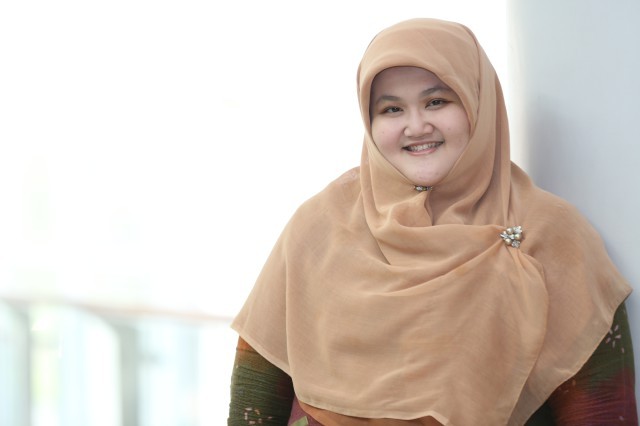
Dr. Adilla Anggraeni, B.Bus., MBA.
Dr. Adilla Anggraeni, B.Bus., MBA. earned her Doctor from University of Indonesia and Master Degree in Business Administration from University of Wales in 2010. Previously, she obtained her bachelor degree in marketing from Nanyang Business School, Nanyang Technological University in 2007.
She worked for American International Assurance, Singapore from 2007-2009. Besides being a full time lecturer in Marketing, Binus International Adilla is currently pursuing her doctoral degree in Marketing in University of Indonesia.
Case Document
[CASE STUDY] ARTOTEL GROUP: THE ART OF STEALING MARKET SHARE
[CASE STUDY] GOTTA CATCH ‘EM ALL: ARE NIANTIC AND POKEMON GO STAYING AHEAD OF THE GAME?
[CASE STUDY] SWARGALOKA: EMBARKING THE HERITAGE JOURNEY
Swargaloka was first established in 17th of June 1993, by Suryandoro, a graduate of ISI (Institusi Seni Indonesia/Indonesian Institute of the Arts) located in Yogyakarta. They moved to Jakarta in the late 1990s as the founders move to Jakarta for their new career. An avid dancer himself, Suryandoro first intended Swargaloka as an establishment to prepare future generation of dancers. He received full support from his family who consists of gifted artists and dancers. Suryandoro’s wife, Dewi Sulastri, is one of the world dance maestros with a beautiful voice. The mother of four has produced dozens of new dances and performances. Some of the well-known dances of her creations Srimpi Retno Utama (1989), Bondan Suko Asih (1989), Bedaya Dewi Sri (2003), Bedoyo Aji Soko (2008), Bedoyo Tri Sabdo Tunggal Indonesia (2009), and Bedoyo Merah Putih (2009). She was awarded as the first female director and dancer by Museum Rekor Indonesia (MURI) in 2008. Their son, Bathara Saverigadi Dewandoro, was also awarded a world record title as the youngest male Javanese dance choreographer in 2013.
One of his most notable creations is called “Gama Gandrung” (Perjalanan Gandrung), a dance which tells a story of gandung dance journey from Banyuwangi, Jawa Timur. “Gama Gandrung” was first performed at Gedung Kesenian Jakarta on 11th of June, 2014.
Swargaloka was first established as an answer to the needs of having an organization that promotes and cultivates the traditional culture among the young generations. Along the road, Swargaloka has gained both national and international recognition through its various performances. At first, Swargaloka was named Swargaloka Art Department. Along its journey, it became Swargaloka Foundation and PT Gita Swargaloka.
This case discusses Swargaloka’s journey from its first establishment. Despite reaching its 24th year in 2017, Swargaloka still has several issues that it needs to solve to be able to survive as a performing-art group. Its audience numbers remain stagnant, and despite attempting to collaborate with and get funding from various institutions, including the government, Suryandoro still found that the organization is still struggling to make the ends meet. This is due to the facts that conducting a performance is a costly endeavor whereas the ticket sales may not always be sufficient to cover the costs of production.
Moreover, Suryandoro also believes that packaging the performance to be more dynamic, attractive, and communicative will enable them to target the younger audiences. However, even though Swargaloka has put significant efforts to repackage a wayang orang performance, it still has not reached a significant number of audiences.
[CASE STUDY] PT TINAMITRA MANDIRI: WHERE DO WE GO FROM HERE?
Tinamitra Mandiri was established in 2010 in Jakarta with the focus of sustainable development for better life. The company’s main vision is to become a leading provider of clean energy and major player in utilization of alternative energy resources as well as pioneer for sustainable community development projects. Within the past decade many private companies have acted upon this opportunity for the uprising need of natural gas, as a relatively cheaper alternative fuel compared to petrol by bringing the natural gas in other medium form, such as through CNG (Compressed Natural Gas). Tinamitra Mandiri’s CNG Businesss under the name of Tinagas is a subsidiary focusing on providing equipments and natural gas fuels. For Indonesia in particular, natural gas has become an increasingly important resource and a global commodity. As Tinamitra Mandiri plans to strengthen its foothold in Indonesia’s energy market, it will be very likely for them to keep encouraging the conversion of fuel source in the market through variety of strategies. Changes in government regulations and market condition may remain to be the most deciding factors of the success of natural gas marketing efforts in Indonesia. Given its low penetration and low infrastructure coverage, it remains to be seen as how natural gas infrastructure development can support natural gas industry in Indonesia. Nevertheless, the gas industry market remains a viable and potential business opportunity waiting to be explored.
